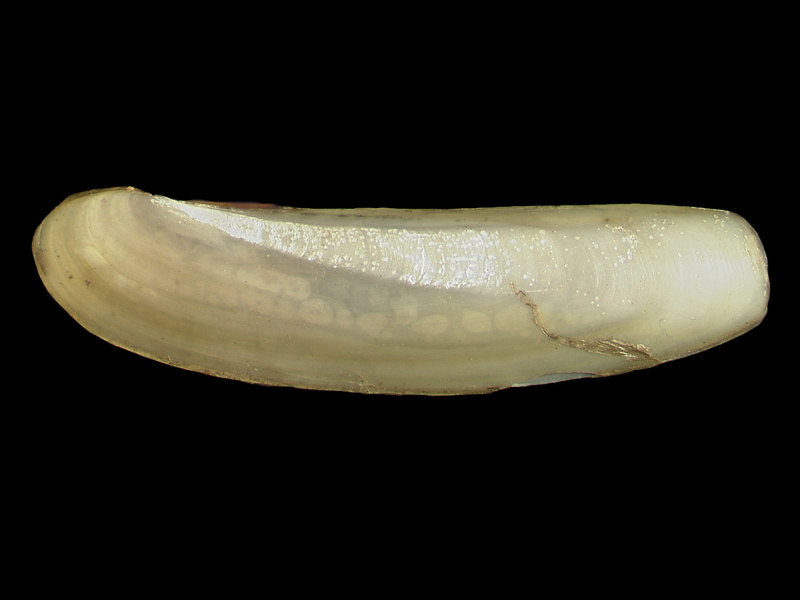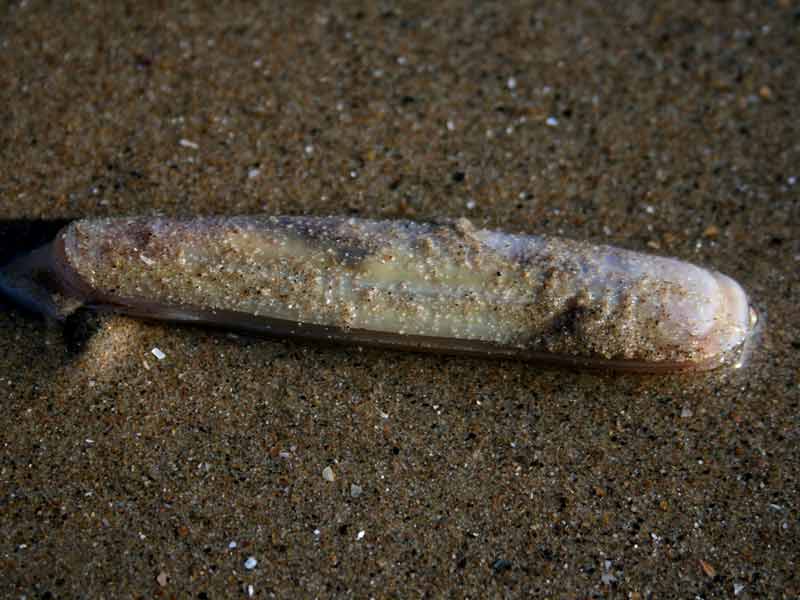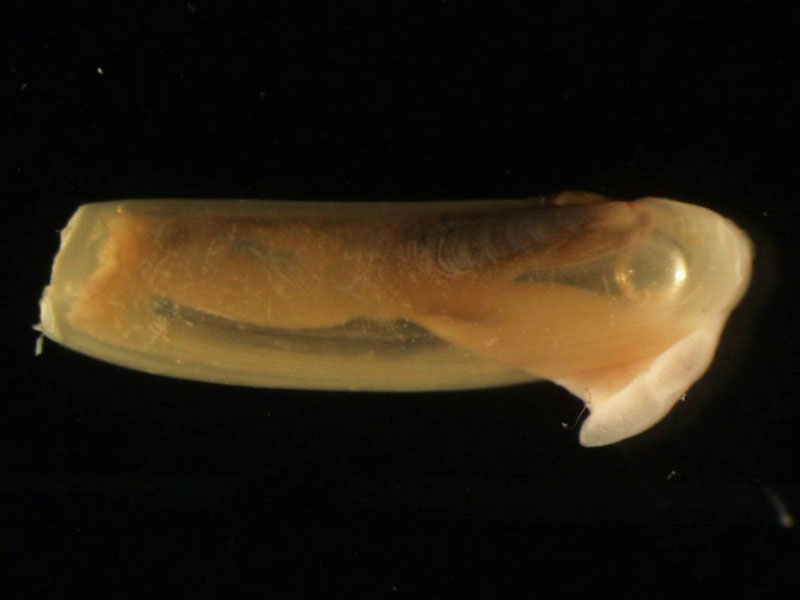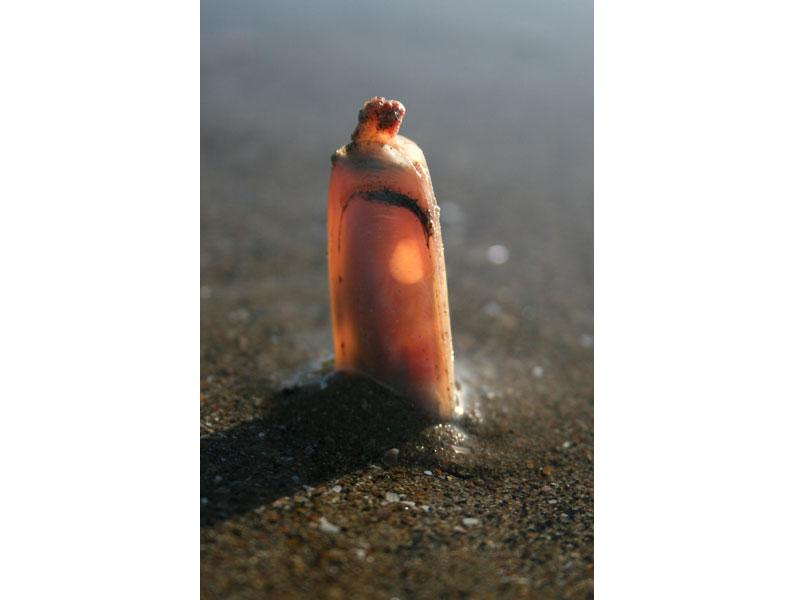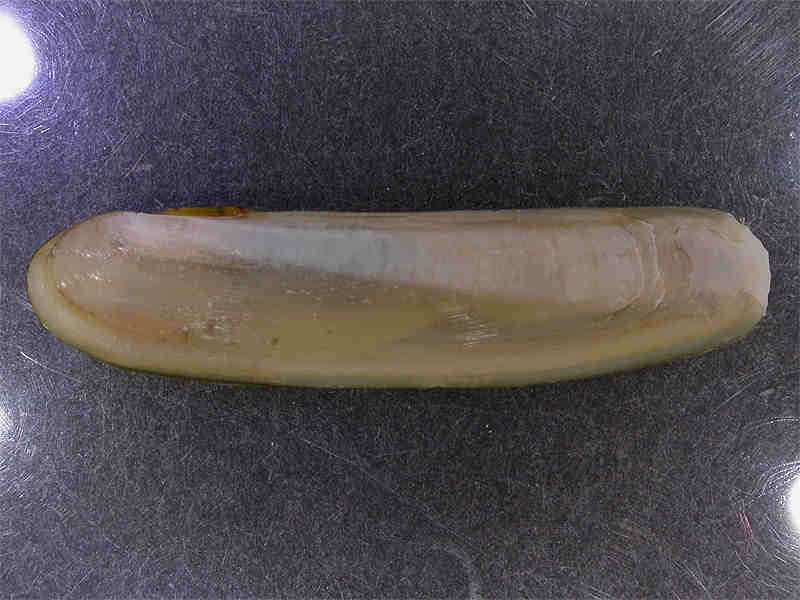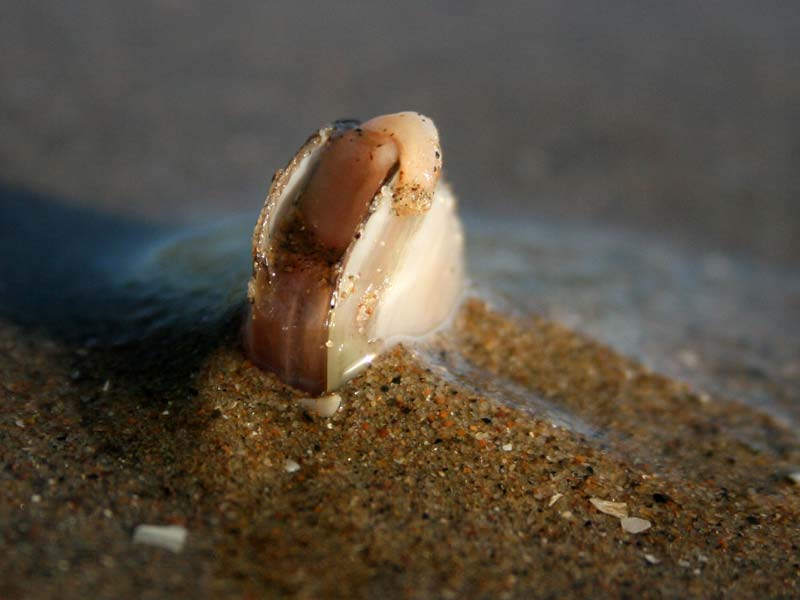Transparent razor shell (Phaxas pellucidus)
Distribution data supplied by the Ocean Biodiversity Information System (OBIS). To interrogate UK data visit the NBN Atlas.Map Help
| Researched by | Anna Neish | Refereed by | Admin |
| Authority | (Pennant, 1777) | ||
| Other common names | - | Synonyms | Cultellus pellucidus (Pennant, 1777) |
Summary
Description
A slender razor shell up to 4 cm long. The shell can be thin and brittle and coloured white or cream, sometimes with dark markings. The outermost, relatively thin layer of shell (periostracum), if present is a glossy light yellow-brown or olive layer. Where the shell is joined the margin is almost straight, whereas the other edge is curved giving the shell a pod shape. The anterior end is rounded and the posterior end slightly truncate.
Recorded distribution in Britain and Ireland
Common off all British coastsGlobal distribution
From Norway south to north west Africa and the Mediterranean.Habitat
Phaxas pellucidus is found in fine mixed sands offshore to depths of around 100 m.Depth range
-Identifying features
- Pod shaped razor shell up to 4cm long.
- Dorsal margin almost straight.
- Curved ventral margin.
- Anterior end rounded and upturned.
- White or cream in colour.
- Glossy, light yellow-brown to olive periostracum.
- Distinguished from other razor shells by the hinge teeth.
Additional information
Phaxas pellucidus can be distinguished from other razor shells by the hinge teeth.
Listed by
- none -
Bibliography
Hayward, P., Nelson-Smith, T. & Shields, C. 1996. Collins pocket guide. Sea shore of Britain and northern Europe. London: HarperCollins.
Hayward, P.J. & Ryland, J.S. (ed.) 1995b. Handbook of the marine fauna of North-West Europe. Oxford: Oxford University Press.
Howson, C.M. & Picton, B.E., 1997. The species directory of the marine fauna and flora of the British Isles and surrounding seas. Belfast: Ulster Museum. [Ulster Museum publication, no. 276.]
Picton, B.E. & Costello, M.J., 1998. BioMar biotope viewer: a guide to marine habitats, fauna and flora of Britain and Ireland. [CD-ROM] Environmental Sciences Unit, Trinity College, Dublin.
Datasets
Centre for Environmental Data and Recording, 2018. Ulster Museum Marine Surveys of Northern Ireland Coastal Waters. Occurrence dataset https://www.nmni.com/CEDaR/CEDaR-Centre-for-Environmental-Data-and-Recording.aspx accessed via NBNAtlas.org on 2018-09-25.
Conchological Society of Great Britain & Ireland, 2018. Mollusc (marine) data for Great Britain and Ireland - restricted access. Occurrence dataset: https://doi.org/10.15468/4bsawx accessed via GBIF.org on 2018-09-25.
Conchological Society of Great Britain & Ireland, 2023. Mollusc (marine) records for Great Britain and Ireland. Occurrence dataset: https://doi.org/10.15468/aurwcz accessed via GBIF.org on 2024-09-27.
Merseyside BioBank., 2018. Merseyside BioBank (unverified). Occurrence dataset: https://doi.org/10.15468/iou2ld accessed via GBIF.org on 2018-10-01.
NBN (National Biodiversity Network) Atlas. Available from: https://www.nbnatlas.org.
OBIS (Ocean Biodiversity Information System), 2025. Global map of species distribution using gridded data. Available from: Ocean Biogeographic Information System. www.iobis.org. Accessed: 2025-07-30
Citation
This review can be cited as:
Last Updated: 17/04/2008

